New Moons of Jupiter
New Moons of Jupiter (S/2011 J1 - S/2011 J2)
The list goes on of the moons of Jupiter, in late 2011, it rose from 65 to 67. In 1610 Galileo announced the discovery of the first moon, the four largest of Jupiter.
With his new glasses, he can see Io, Europa, Ganymede and Callisto, turn around the largest planet in the solar system. SSince the number of known moons of Jupiter has greatly increased. On January 29, 2012, a research team led by Scott S. Sheppard of the Carnegie Institution of Washington, announced the discovery of two new moons, the 66th and 67th moons are named interim S/2011 J1 and S/2011 J2. The peculiarity of its moons is that they orbit around Jupiter in the opposite direction of rotation of Jupiter, they are retrograde.
These are very small bodies, compared with the large moons, their diameter is only a few kilometers.
Both moons have a highly elliptical orbit. S/2011 J1 is an mean distance of 20 million km of Jupiter, S/2011 J2 to 23 million km. This observation was made by the Magellan 6.5-meter telescope located at Las Campanas in the Andes in Chile, known for the quality of the sky.
The two newly discovered moons belong to the category of so-called irregular satellites of Jupiter, of which 59 are currently known.
The irregular satellites are characterized by the fact that their orbits are elliptical and located at great distances from their planets. In addition they are often highly inclined with respect to the equatorial plane of the planet. The four giant planets of the solar system, i.e. Jupiter, Saturn, Uranus and Neptune have many irregular satellites. Astronomers assume that these moons were originally asteroids that were captured by the gravitational field of the giant planets. Over the past decade, dozens of irregular satellites were discovered, there are currently a total of 172 known moons around the planets of the solar system. We owe these discoveries to many telescopes with CCD sensors, many light-sensitive, have been significantly improved.
Image: The orbits of the satellites of Jupiter are represented on this graph. The small purple circles in the middle of the image are the orbits of the four large moons, which are nearly circular. The orbits shown in green, red and blue are the orbits, highly elliptical, irregular moons.The orbits of Jupiter, stretch 400 000 km to 30 million km from the giant Jupiter.
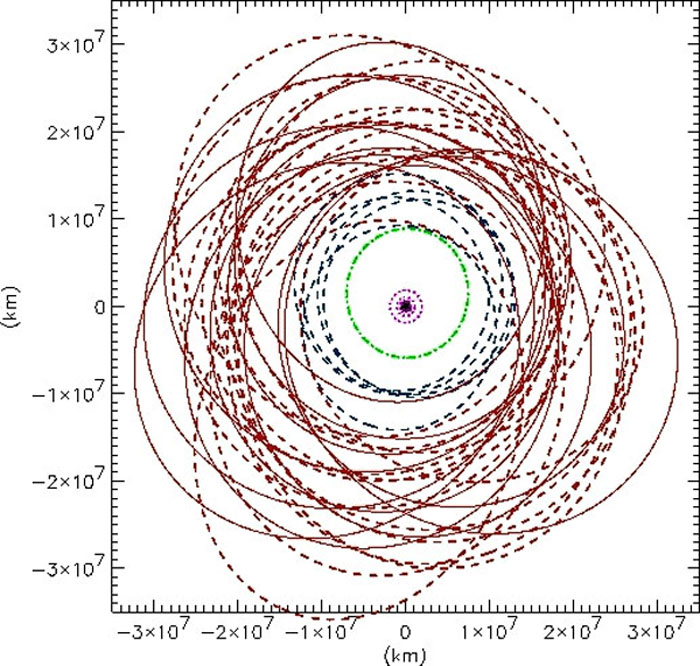
The four large moons of Jupiter
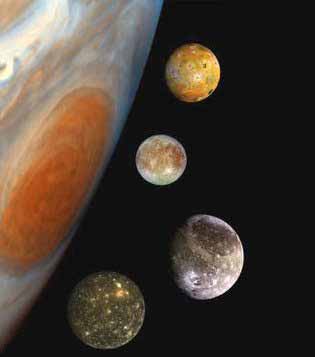
Image: The four Galilean moons of Jupiter (left). From upper to lower: Io, Europa, Ganymede and Callisto. The ballet of its four main satellites (Io, Europa, Ganymede, Callisto) can be observed with a simple pair of binoculars 10x50, an instrument of 60mm diameter reveal two broad belts brownish, parallel to the equator of the giant planet . Jupiter has more than 60 known moons whose names are drawn from Greek mythology.
Moon | mean diameter | mass |
| Ganymede | 5 262,4 km | 1,48 x 1023 (kg) |
| Callisto | 4 820,6 km | 1,08 x 1023 (kg) |
| Io | 3 643,2 km | 8,93 x 1022 (kg) |
| Europa | 3 121,6 km | 4,8 x 1022 (kg) |
Image: In this photograph (right), bottom left we see Ganymede passing in front of the monster gaseous Jupiter.
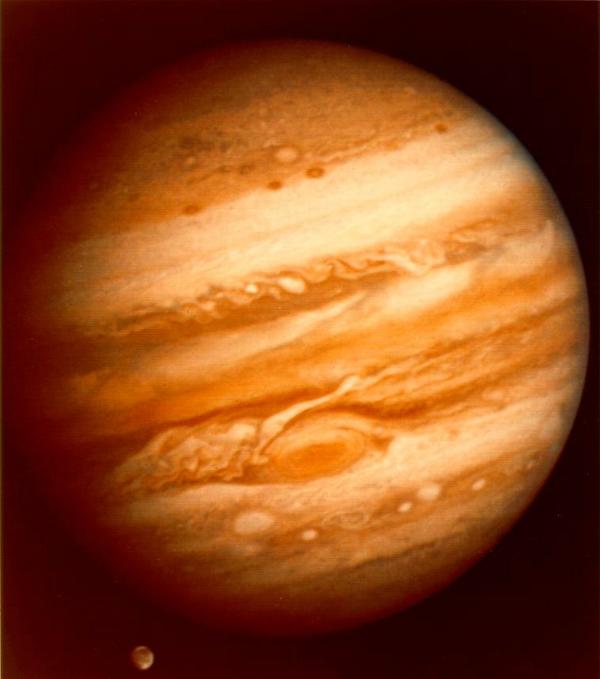
Articles on the same theme
"The data available on this site may be used provided that the source is duly acknowledged."
 Moon Phases
Moon Phases  Apollo 8: The Photo That Shook the World
Apollo 8: The Photo That Shook the World  The largest objects in the solar system
The largest objects in the solar system  The Moon of the earth
The Moon of the earth 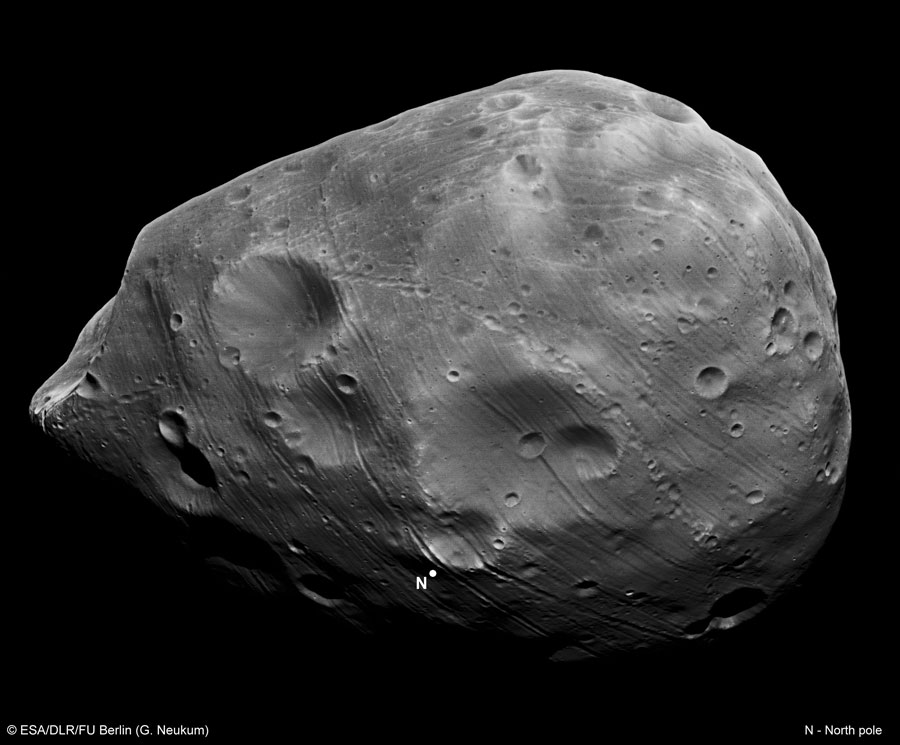 Phobos, will crash into Mars
Phobos, will crash into Mars  Europa, moon of Jupiter
Europa, moon of Jupiter 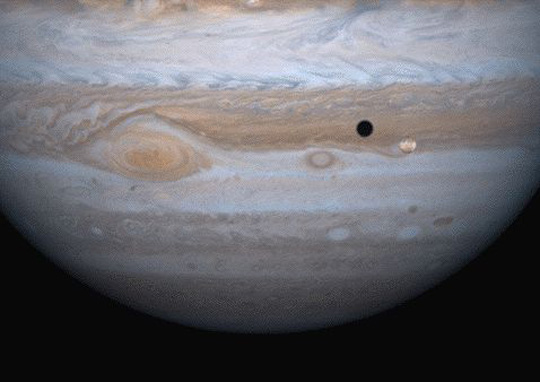 Io, moon of Jupiter
Io, moon of Jupiter 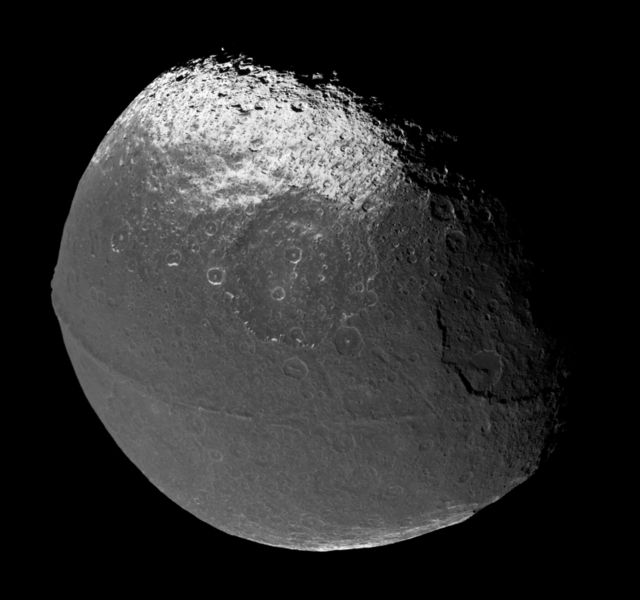 Iapetus, moon of Saturn
Iapetus, moon of Saturn  Dione, moon of Saturn
Dione, moon of Saturn  Mimas, moon of Saturn
Mimas, moon of Saturn 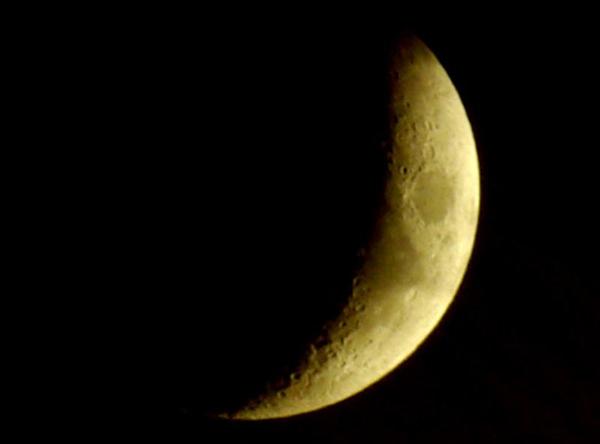 Impact theory at the origin of the Moon
Impact theory at the origin of the Moon  Neptune's moons
Neptune's moons  Lunar Eclipse, Celestial Concordance
Lunar Eclipse, Celestial Concordance  Pluto and its satellites
Pluto and its satellites 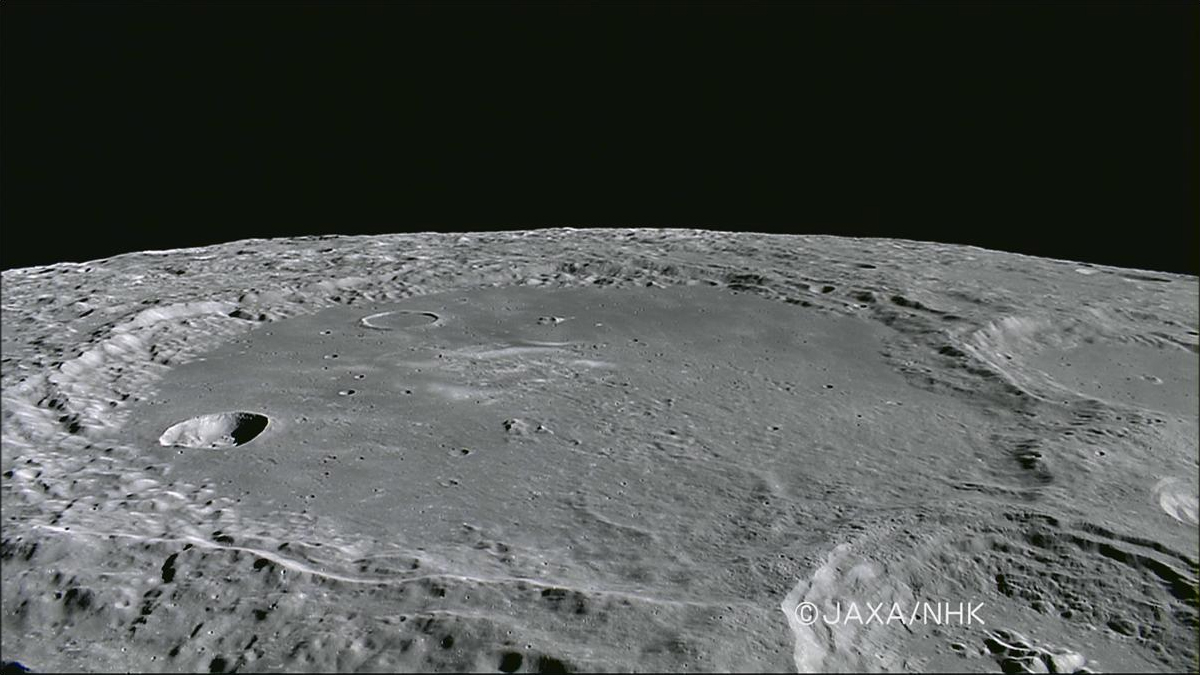 The Large Craters of the Moon
The Large Craters of the Moon  Hyperion, moon of Saturn
Hyperion, moon of Saturn  Eclipses explained by the plane of the lunar orbit
Eclipses explained by the plane of the lunar orbit 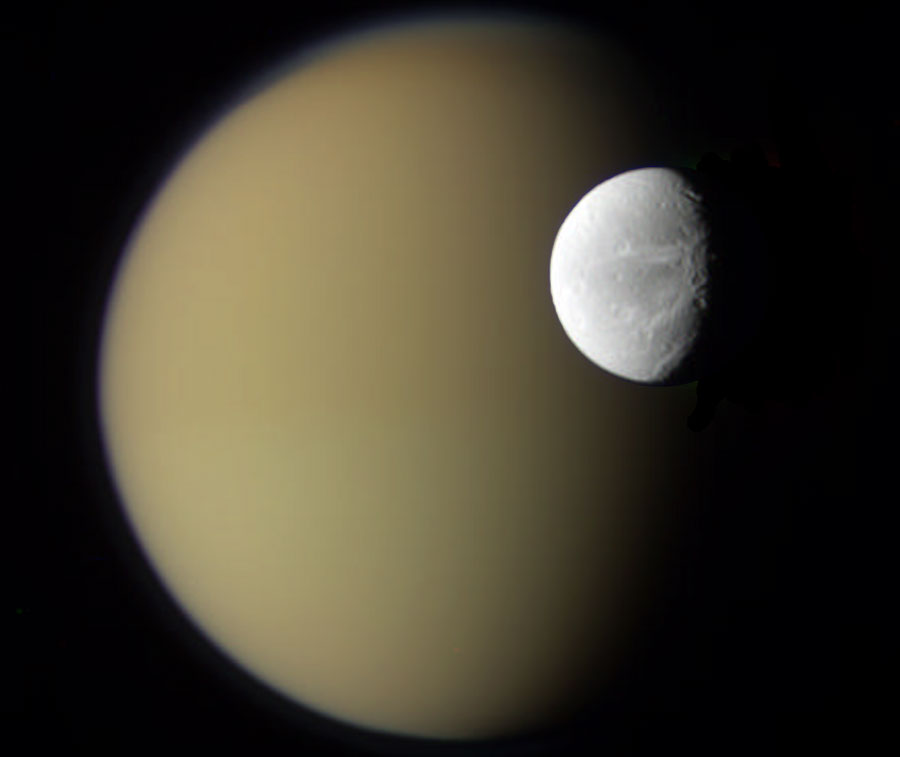 Titan and Dione seen by cassini
Titan and Dione seen by cassini  Eruptions of ice geysers on Enceladus
Eruptions of ice geysers on Enceladus 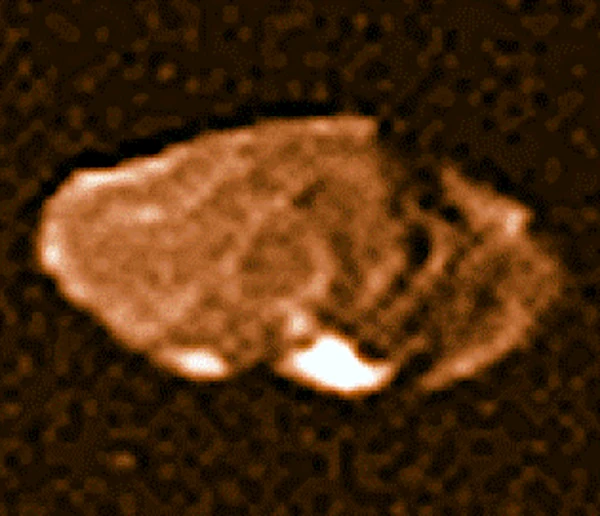 Amalthea, a block remnant of Jupiter
Amalthea, a block remnant of Jupiter  Deimos, moon of Mars
Deimos, moon of Mars  Moon Illusion
Moon Illusion  Little Rhea, very close to Saturn
Little Rhea, very close to Saturn  Helen, the small Trojan moon of Saturn
Helen, the small Trojan moon of Saturn 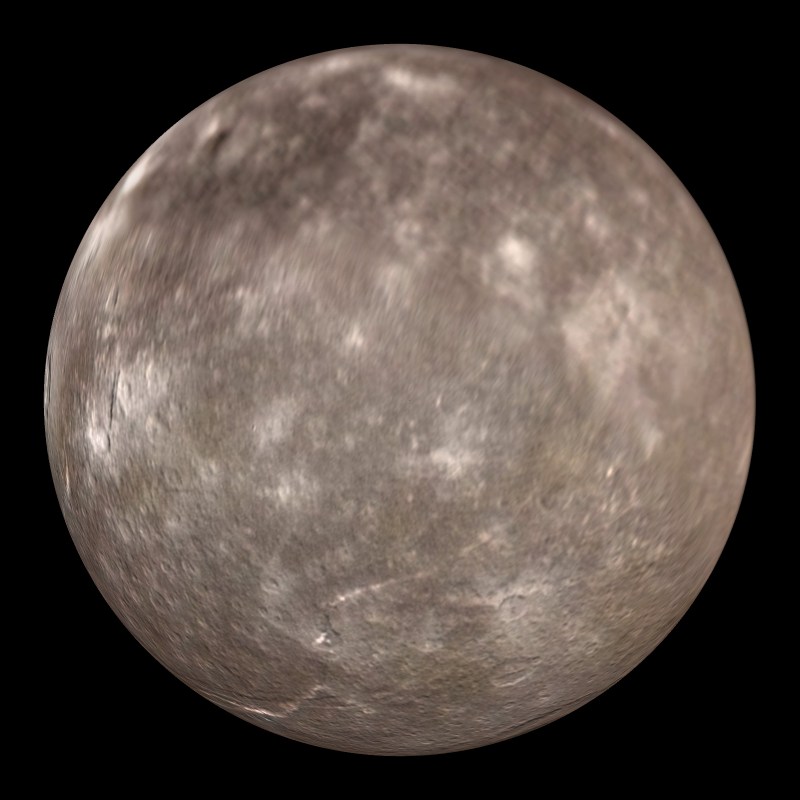 Titania, moon of Uranus
Titania, moon of Uranus 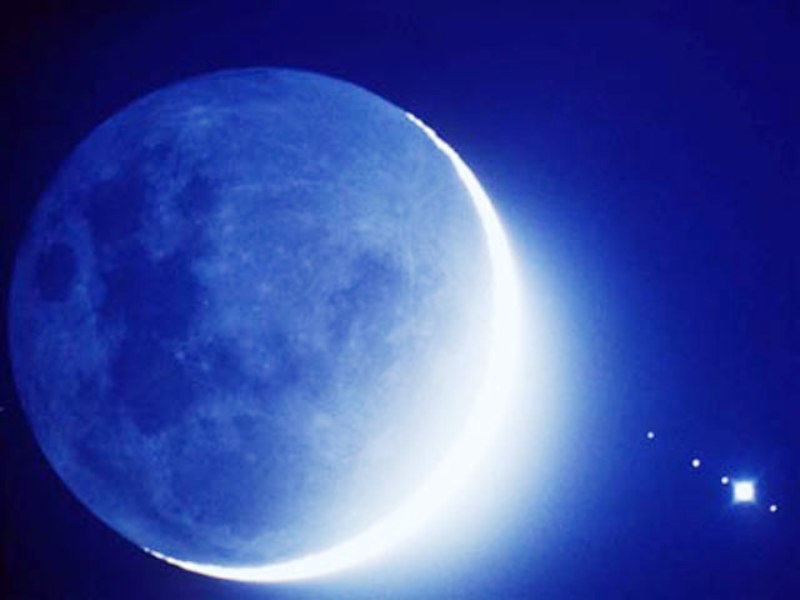 The Blue Moon
The Blue Moon 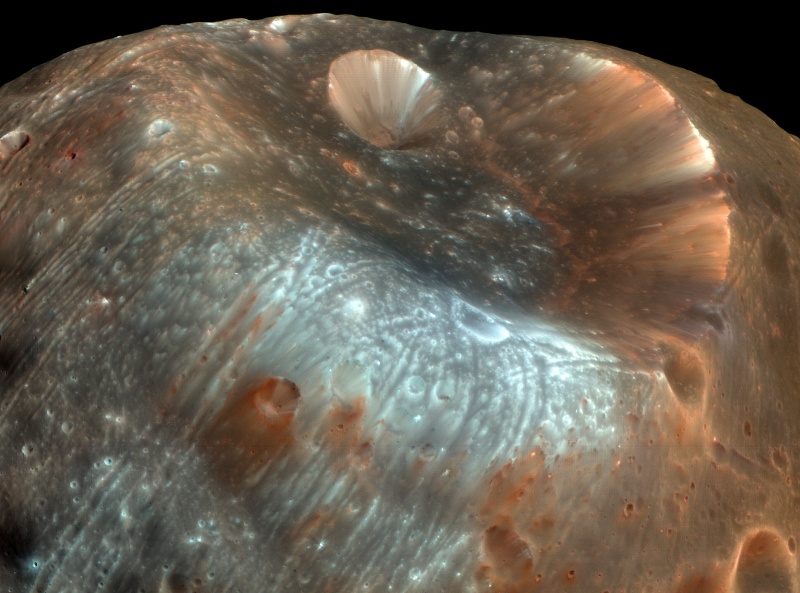 Stickney Crater on Phobos
Stickney Crater on Phobos 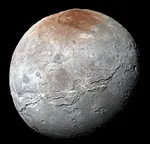 Charon and Pluto: An Inseparable Duo
Charon and Pluto: An Inseparable Duo  Roche Limit or Roche Radius
Roche Limit or Roche Radius  Super Moon
Super Moon  The moons of the solar system
The moons of the solar system  Ganymede, Jupiter's largest moon
Ganymede, Jupiter's largest moon  Tethys, Moon of Saturn
Tethys, Moon of Saturn  Titan, moon of Saturn
Titan, moon of Saturn  Prometheus, the shepherd satellite of Saturn
Prometheus, the shepherd satellite of Saturn 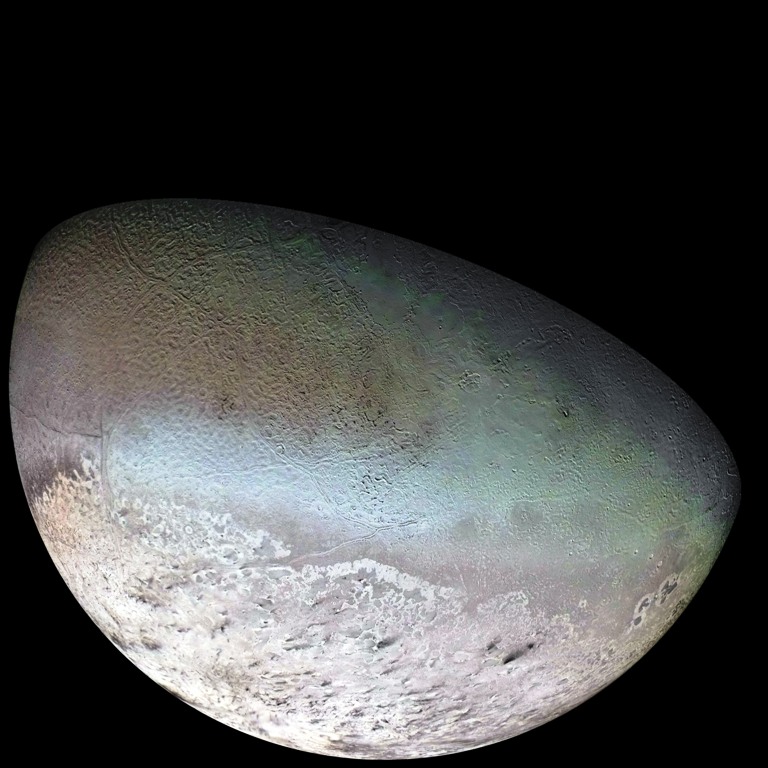 Triton, Neptune's largest moon
Triton, Neptune's largest moon  Miranda: Uranus' Moon of a Thousand Scars
Miranda: Uranus' Moon of a Thousand Scars 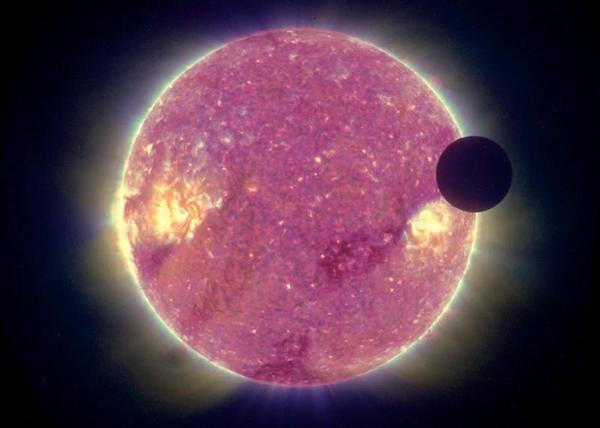 Transit of the Moon in front of the Sun
Transit of the Moon in front of the Sun 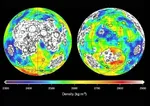 Mascons: Lunar Gravitational Anomalies
Mascons: Lunar Gravitational Anomalies